This is how the book explains the process:
Let me consider the first 90° of the input, the capacitor charges up to the peak voltage less the diode drop of D1, D1 is forward biased and D2 is reverse biased, that's ok, but what I don't understand is, right after 90° to 180°, why isn't D2 forward biased? Shouldn't the cathode of D2 be negative with respect to the anode because of the capacitor's polarity (C1)? Likewise D1 should be reverse biased because of the capacitor, so why isn't current flowing through D2?
.


